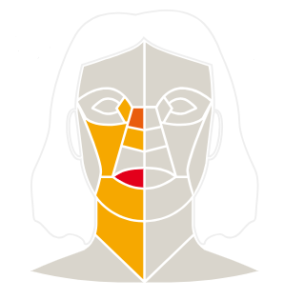Medical Thermography
Oral Health
A Proactive Approach.

Join the Health Optimization Revolution
Thermography, also known as thermal imaging, is a non-invasive diagnostic tool that uses infrared cameras to detect and measure thermal energy emitted from the skin’s surface. This energy is translated into a visual map of temperature variations across the body, including the oral cavity. In oral health, these variations can reveal early signs of inflammation, infections, or irregularities in blood flow, which can be indicative of conditions such as gum disease, tooth infections, or even early oral cancer. Thermography offers a safe, effective way to monitor and assess your oral health without the need for invasive procedures.
Understanding Thermography in Oral Health
Thermography is based on the principle that heat is a natural byproduct of metabolic activity and blood circulation. Areas of inflammation, infection, or abnormal cellular growth generate higher temperatures due to increased blood flow and metabolic rates. Conversely, reduced blood flow or tissue damage, such as that seen in conditions like hypothermia, results in cooler regions, which can also be detected through thermographic imaging.
In oral health, thermography provides a dynamic map of temperature variations, making it possible to spot trouble areas that are invisible to the naked eye or not yet symptomatic. It serves as a valuable adjunct to traditional diagnostic methods, helping to pinpoint problems early and monitor their progression over time.
Detecting Dental Infections with Thermography
Dental infections often begin without noticeable symptoms, quietly progressing until they become severe. These “silent threats” can lead to irreversible damage, including tooth loss or systemic infections if left untreated. Traditional dental exams and X-rays, while effective, may not always identify early-stage issues hidden within the tissues.
Thermography excels in this scenario by identifying subtle temperature changes associated with inflammation. A thermographic scan can reveal localized “hot spots” around teeth, gums, or the jaw, signaling potential infections even before they cause discomfort. This allows dentists to act promptly, preventing the need for invasive treatments like extractions and preserving natural teeth.
Advantages of Thermography
Thermography offers unique benefits in assessing oral health:
Prevention of Tooth Loss and Disease
Early detection is critical in stopping the progression of dental diseases. By integrating thermography into routine checkups, patients can address potential problems proactively. For example, temperature anomalies detected near a tooth may suggest the onset of pulpitis (inflammation of the pulp), allowing for timely interventions like root canals that save the tooth.
Additionally, thermography enables ongoing monitoring of treatment effectiveness. Dentists can assess whether inflammation is resolving or if adjustments are needed, ensuring optimal outcomes. This level of precision strengthens the focus on preventive care, reducing the likelihood of tooth loss, advanced infections, or systemic complications.
Thermography and Mouth Cancer
While thermography’s primary application lies in detecting infections and inflammation, its potential in spotting mouth cancer is an exciting area of ongoing research. Early cancerous lesions may present as abnormal heat patterns due to increased metabolic activity and blood supply in affected tissues. Thermographic imaging could complement traditional diagnostic tools like biopsies or imaging scans, offering a non-invasive way to identify suspicious areas for further investigation. Early detection of oral cancer significantly improves treatment outcomes and survival rates, making thermography a promising addition to comprehensive care.
A Future of Enhanced Preventive Care
Thermography is transforming how we approach oral health by offering a painless, non-invasive method to detect infections, inflammation, and systemic issues like hypothermia. Its ability to visualize temperature anomalies equips dentists and healthcare providers with an additional layer of diagnostic precision, enabling earlier intervention and improved treatment outcomes.
As research continues to uncover the full potential of thermography, its integration into routine dental assessments could revolutionize preventive care. By detecting hidden threats before they escalate, thermography safeguards not only oral health but also overall well-being, ensuring that every smile is as healthy as it is beautiful.
